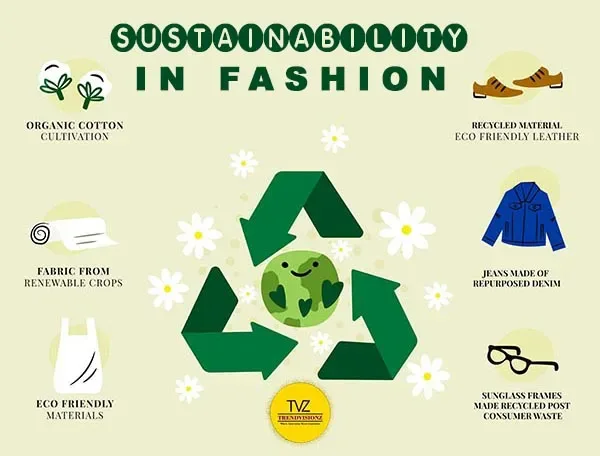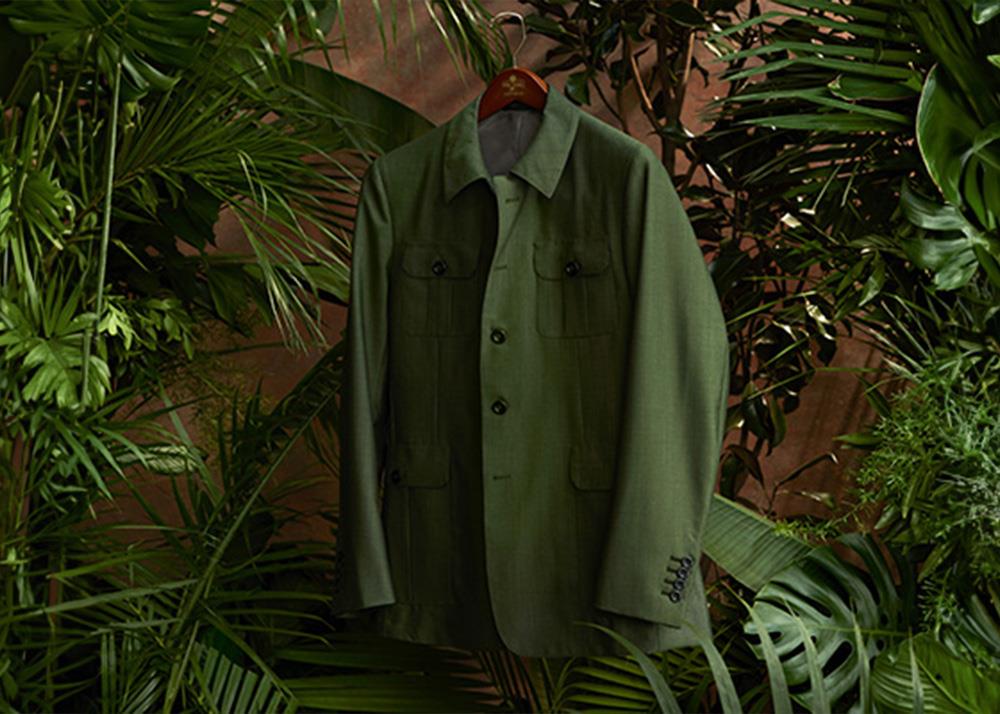Remain Ahead of the Curve by Exploring Ingenious Style Fads
In an industry as vibrant as style, remaining in advance involves even more than just adhering to current trends-- it demands an expedition of advancement. Smart fabrics, as an example, are transforming garments right into useful masterpieces, while 3D printing is transforming layout procedures with its customizable, waste-reducing capacities. As sustainability comes to be a keystone, developments like green products and circular fashion practices are reshaping ecological duty - Cape Town Sustainable Fashion. Furthermore, the convergence of innovation and style declares a new era of consumer interaction. Just how, after that, can these arising fads redefine the future of style, and what effects do they hold for brand names looking for to grow in this evolving landscape?

Accepting Smart Textiles
In recent times, the apparel industry has observed a transformative shift with the combination of wise fabrics, a cutting-edge technology that mixes technology with material. This evolution stands for not only a blend of looks and performance but also a significant leap in the direction of sustainability and customization in style. Smart fabrics, likewise referred to as e-textiles, installed innovative electronics such as sensing units and conductive strings within the textile, allowing garments to interact with the user or the atmosphere.
These textiles are made to check physical criteria, such as heart rate or body temperature, offering real-time health and wellness analytics. Past health and wellness applications, wise fabrics are also being used for adaptive clothing, which can change shade or pattern in response to ecological stimulations, therefore providing a dynamic fashion experience.
Furthermore, the development of energy-harvesting textiles that generate power from activity or sunshine is paving the means for self-dependent wearable modern technology. This advancement is interesting eco aware consumers and designers intending to lower the environmental impact of fashion. As r & d in this area breakthrough, wise textiles are expected to come to be significantly widespread, improving the landscape of modern-day style with their multifunctional capabilities.
The Surge of 3D Printing
Transforming the manufacturing landscape, 3D printing has arised as a game-changer in the apparel industry. This innovative technology has enabled designers to press the limits of imagination, creating elaborate and tailored garments that were formerly unthinkable. By leveraging digital layout and additive production, 3D printing promotes the production of complicated geometries and patterns, enabling designers to try out new structures and structures.
A significant benefit of 3D printing in vogue is its capability to create on-demand, decreasing waste and reducing stock requirements. This performance not just maximizes production procedures yet likewise permits for rapid prototyping, enabling developers to bring their visions to life in a shorter timeframe. In addition, 3D printing supports customization to a level unequaled by typical approaches, using special styles and individualized fits tailored to specific consumer preferences.
The increase of 3D printing has likewise democratized fashion, making it accessible to arising designers that can currently produce high-grade items without significant financial investment in standard manufacturing infrastructure. As technology continues to breakthrough, the fashion business is poised to harness the full capacity of 3D printing, discovering brand-new products and techniques that will undoubtedly redefine how style is developed and created.
Sustainable Fashion Developments
As the fashion business grapples with journalism demand for ecological obligation, lasting style developments have emerged at the leading edge of transformative adjustment. The growing recognition of environmental influence has fueled a shift towards more eco-conscious techniques and products. Brand names and designers are now focusing on sustainability, including methods that decrease waste and minimize carbon impacts.
One significant development is the rise of round fashion, which stresses recycling and upcycling to prolong the lifecycle of garments. This approach not only lowers waste but likewise motivates consumers to adopt a much more conscious strategy to apparel intake. Additionally, using sustainable products, such as organic cotton, hemp, and recycled polyester, has gained traction. These materials require less water and power during manufacturing, substantially reducing environmental impact.
An additional breakthrough depends on the adoption of ingenious dyeing strategies that use waterless processes or all-natural dyes, therefore reducing the huge quantities of water and chemicals traditionally utilized in fabric dyeing. Furthermore, improvements in biotechnology have actually brought about the development of lab-grown natural leather and textiles, using eco pleasant and cruelty-free options to conventional materials. Through these pioneering initiatives, the fashion market is making purposeful strides towards a much more lasting future.

Tech-Integrated Apparel
Tech-integrated garments represents a cutting-edge blend of fashion and technology, improving exactly how people communicate with their clothing. This innovative domain name is marked by the incorporation of clever textiles and ingrained digital components, boosting both capability and aesthetic allure. From health and fitness trackers embedded in sports apparel to heated coats managed via smart device apps, tech-integrated garments uses consumers unmatched benefit and flexibility.
Pioneering brands are driving this pattern, concentrating on developing garments that react to environmental stimuli or user commands. For example, some garments can change shade or pattern in feedback to temperature level changes, while others integrate biometric sensors to keep track of health metrics like heart price or stress and anxiety degrees. The seamless integration of technology right into fabrics likewise encompasses environmental sustainability, with initiatives to establish self-cleaning fabrics or garments that adapt to weather problems, hence reducing the demand for several layers.
Additionally, the arrival of wearable technology is not simply limited to garments yet encompasses devices like watches and eyeglasses, more expanding the scope of tech-integrated style. As the market proceeds to introduce, the possibility for modification and customization in clothing expands, supplying customers one-of-a-kind, tech-enhanced style experiences that cater to their specific requirements and preferences.
Future of Virtual Style
In recent years, the future of digital fashion has actually become a transformative force within the market, leveraging pop over to these guys advancements in electronic technology to redefine just how fashion is produced, experienced, and consumed. By integrating increased truth (AR), digital truth (VIRTUAL REALITY), and 3D design devices, developers can now craft interactive and immersive experiences that transcend standard fashion borders. Virtual fashion permits the creation of garments that exist only in digital atmospheres, supplying limitless possibilities for technology without the limitations of physical production.
This electronic change not only provides possibilities for creative expression but likewise addresses sustainability concerns intrinsic in traditional fashion methods. Cape Town Sustainable Fashion. By removing the demand for physical sources, digital why not try these out fashion decreases waste and decreases carbon footprints. Moreover, the surge of digital style aligns with the boosting customer need for tailored and one-of-a-kind experiences, as virtual garments can be customized and tailored to individual choices easily

Verdict
The garment industry's future depend on the integration of lasting practices and cutting-edge modern technologies - Cape Town Website Sustainable Fashion. Smart textiles and tech-integrated apparel are enhancing capability, while 3D printing provides possibilities for personalization and waste decrease. Sustainable style, with green materials and round approaches, demonstrates a dedication to ecological stewardship. Furthermore, online style is poised to redefine consumer communications. Adjusting to these trends is necessary for brand names seeking to continue to be competitive and pertinent in this swiftly advancing landscape.
In current years, the fashion market has experienced a transformative shift with the assimilation of wise textiles, an innovative technology that blends modern technology with textile.As the style industry grapples with the pressing need for ecological responsibility, sustainable fashion innovations have emerged at the forefront of transformative change.In recent years, the future of virtual style has actually emerged as a transformative pressure within the sector, leveraging innovations in electronic modern technology to redefine just how style is developed, experienced, and taken in. The increase of online style straightens with the enhancing customer demand for customized and distinct experiences, as virtual garments can be customized and customized to specific choices with simplicity.
The fashion sector's future lies in the assimilation of cutting-edge innovations and sustainable practices.